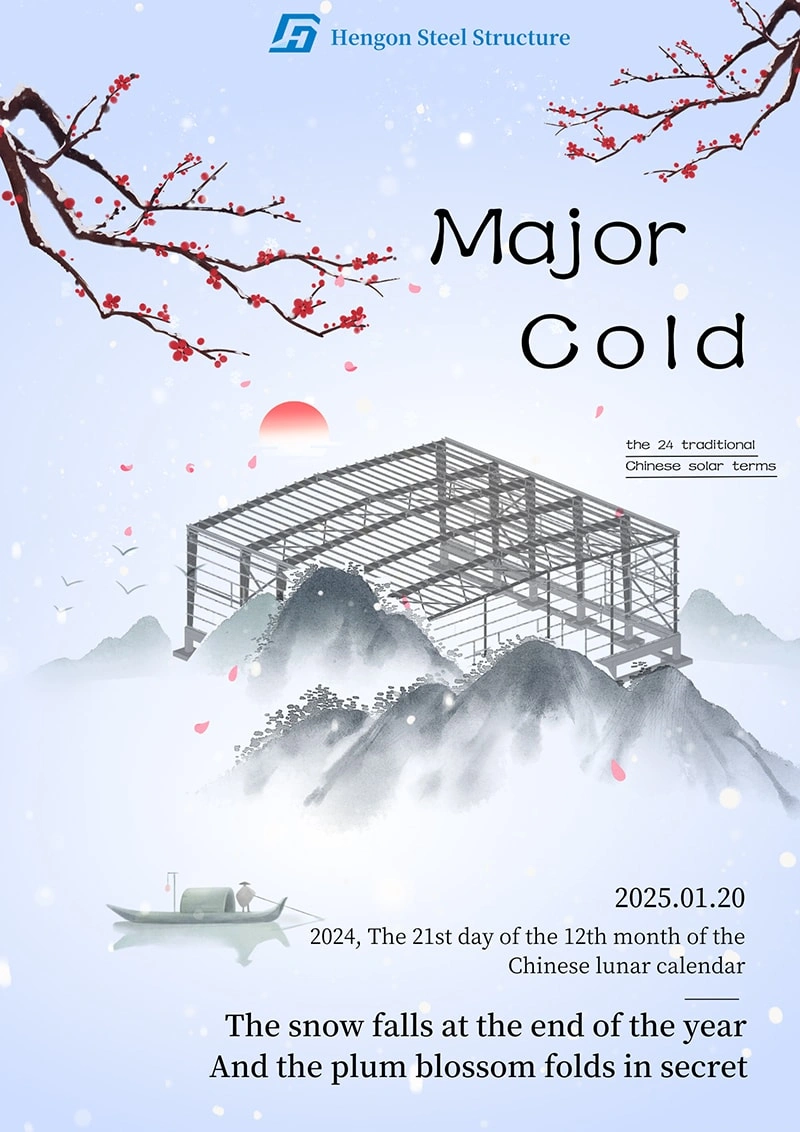The Major Cold (Dahan) is the last solar term of the 24 solar terms, usually occurring around January 20-21, when the sun reaches 300° longitude. During this time, cold waves frequently move south, making it the coldest period of the year and also the time with the least precipitation.
Around the Major Cold period, Hengon Steel Structure has been steadily dispatching goods. For clients in areas with cold weather, Hengon would like to share some useful tips on installing prefabricated steel structures in cold, snowy conditions to ensure the smooth progress of your projects.

1. Wind and Snow Load Considerations
In cold weather, strong winds and accumulated snow can put significant pressure and dynamic loads on steel structures. Hengon’s professional design team carefully evaluates the weather conditions at the construction site when preparing drawings, ensuring the safety and stability of the building with appropriate bracing of steel frames.
2. Transportation Issues
After the warehouse building materials arrive at their destination, it’s essential to take measures to prevent slipping during transportation. The stacking area for the materials should be flat, firm, and free from ice. When stacking components, ensure that they are placed vertically, at a right angle to the ground, to prevent slipping or falling, ensuring safety throughout the process.
3. Installation Considerations
Before the structural steel installation, steel bracing should be thoroughly checked to ensure that no deformation has occurred due to low temperatures. Hengon takes the low-temperature factor into account during production, and all prefabricated steel structures undergo a complete quality inspection before shipment to ensure the materials are free of defects. If any deformation occurs due to temperature fluctuations, components must be re-inspected, and only those that meet the required standards can be used for installation.
During the structural steel installation, make sure that the components are clean and free of snow, dirt, or water, as these could damage the surface coatings of the structural steel material, potentially affecting the long-term use and performance of the building.
4. Worker Safety
Before installation, workers must check for ice or frost on scaffolding. If ice and snow have not melted, construction should not proceed. Worker safety is of the utmost importance during this time, and proper precautions must be taken to ensure a safe working environment.